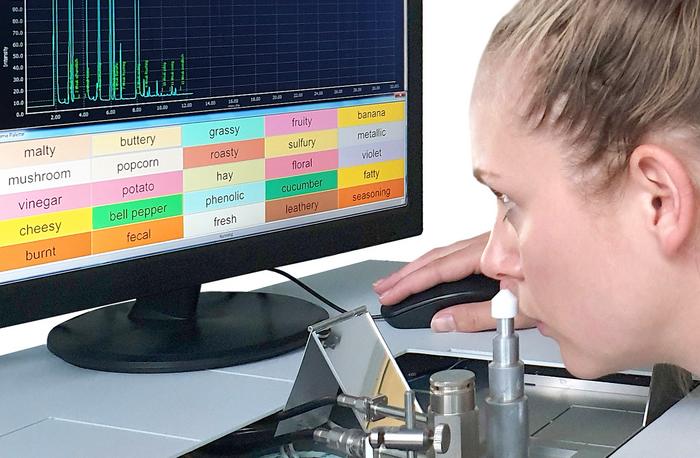
When it comes to analyzing the complex world of food odorants, a significant hurdle arises from the potential for artifacts. These artifacts can significantly distort analytical results, leading researchers and food scientists to question the reliability of their findings. Recent research conducted by experts at the Leibniz-Institute for Food Systems Biology at the Technical University of Munich has shed light on this issue, particularly focusing on the injection methods used in gas chromatography-olfactometry. Their study provides compelling evidence that the methodology of injection may play a crucial role in the formation of artifacts, thereby affecting the accuracy of odorant analyses.
The study in question meticulously compares various injection methods, revealing insights into the optimal techniques for minimizing artifacts. Gas chromatography-olfactometry has long been recognized as a fundamental technique in the identification of odor-active compounds. These volatile compounds are essential not only for the sensory qualities of food but also for influencing consumer purchasing decisions. However, the challenge of accurately analyzing these compounds has prompted researchers to rethink their approaches. As the team at Munich demonstrates, the quality of analysis hinges significantly on the injection methodology employed.
Artifacts can arise at different stages of the analytical process, particularly during the isolation and subsequent analysis of volatile compounds. The researchers highlight that, while significant progress has been made in minimizing artifacts during sample preparation, the challenges posed by sample injection have remained largely underestimated. Martin Steinhaus, the principal investigator of the study, emphasizes this point, stating that the formation of artifacts during injection has not received the attention it warrants, partly due to a lack of comparative data across various techniques.
To address this knowledge gap, Julian Reinhardt, the first author of the research, undertook an extensive examination of ten distinct injection methods utilizing 14 different test compounds. His findings highlight a critical insight: high injection temperatures are particularly prone to creating odor-active artifacts. The implications of this discovery signal a call to action for researchers commonly utilizing gas chromatography-olfactometry.
Among the injection methods examined, on-column injection emerged as the standout technique, demonstrating a marked reliability in preserving the integrity of samples. This method minimizes exposure to high temperatures during injection, thus reducing the risk of artifact formation. In stark contrast, splitless injection conducted at elevated temperatures was shown to induce significant artifact production, especially in conjunction with headspace solid-phase microextraction techniques. Steinhaus advocates for on-column injection as the preferred method for those seeking precise and accurate odorant profiles.
The ramifications of these findings extend beyond theoretical implications, as they propose a new standard for odorant analysis within the food science community. Accurate detection and quantification of odor-active substances are vital for industries ranging from food production to flavoring, where consumer preferences are influenced by nuanced sensory experiences. A more reliable methodology will ultimately aid in the development of food products that are not only appealing but also aligned with consumer health needs and preferences.
The researchers are slated to publish their findings in the esteemed Journal of Chromatography A, where their research will contribute to a broader discussion on optimizing techniques and technologies within food science. The meticulous exploration of injection methods marks a pivotal step toward establishing best practices within the field, offering valuable insights for both academic and commercial applications.
In addition to scrutinizing injection techniques, the research team is also at the forefront of developing automated methods for isolating volatile food ingredients. Their work in automating Solvent-Assisted Flavor Evaporation (aSAFE) has demonstrated substantial improvements compared to traditional manual methods. Achieving higher yields while minimizing contamination risks further underscores the importance of innovative approaches in food science research.
Moreover, the integration of automation into the isolation process vast potential for future advancements. As the food industry continues to evolve, researchers must remain vigilant in their pursuit of methodologies that prioritize both quality and efficiency. The findings emerging from Munich’s Leibniz Institute juxtapose the intricate challenges of food analysis against the pressing need for reliable and user-friendly methods tailored to contemporary industry demands.
As food scientists continue to grapple with the complex interplay of flavor, aroma, and consumer preferences, their success hinges upon resolving issues related to artifact formation. The Munich-based research group’s findings create opportunities for dialogue, innovation, and collaboration, prompting researchers worldwide to reassess their procedures and approach the analysis of volatile compounds with a renewed sense of rigor and diligence.
Ultimately, the work conducted by this team signifies more than just an academic exercise; it represents a multifaceted exploration into the foundations of food science methodology. As food chemistry and technology intersect with consumer desires and health imperatives, the refinement of analytical techniques becomes paramount. By prioritizing artifact reduction methods, researchers can not only enhance the validity of their results, but also elevate the standards by which food products are assessed and produced.
In summary, the meticulous evaluation of injection methods in gas chromatography-olfactometry has revealed critical insights that stand to shape the future of odorant analysis in food research. While challenges persist within the field, the collaborative efforts of these dedicated scientists signal a path forward — a pathway defined by enhanced methodologies, clearer results, and a deeper understanding of the world of food odorants.
Subject of Research: Odorant analysis and injection methods in gas chromatography-olfactometry
Article Title: Injection artifacts in odorant analysis by gas chromatography
News Publication Date: 21-Dec-2024
Web References: Journal of Chromatography A
References: Reinhardt, J. and Steinhaus, M. (2025). Injection artifacts in odorant analysis by gas chromatography. J Chromatogr A. 1741, 465624.
Image Credits: Credit: PD Dr. Martin Steinhaus
Keywords: Gas chromatography, odorants, artifacts, food analysis, injection methods, food chemistry, chromatography, sensory analysis, research methods.
Tags: artifact-free analytical approachesconsumer purchasing behavior and odorantsfood odorant analysisfood systems biology researchgas chromatography-olfactometry techniquesinjection methods in analytical chemistrymethodology impact on analytical resultsminimizing artifacts in analyticsreliable odorant identification methodsresearch at Technical University of Munichsensory qualities of food productsvolatile compounds in food





